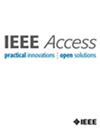Enhancing Burn Severity Assessment With Deep Learning: A Comparative Analysis and Computational Efficiency Evaluation
IF 3.4
3区 计算机科学
Q2 COMPUTER SCIENCE, INFORMATION SYSTEMS
引用次数: 0
Abstract
Burn injuries present a substantial global public health challenge. The conventional approach, relying on visual inspection to compute total body surface area (TBSA) for assessing burn severity, encounters the inherent limitations of proper estimation. These limitations prompted the development of computer-based applications, particularly machine learning, and deep learning models, to enhance the performance. This paper presents a comprehensive analytical study of eight deep learning techniques designed for assessing burn severity in terms of four characteristics: inflammation, scar, uniformity, and pigmentation, in small datasets of 2-dimensional (2D) images captured using digital (smartphone) camera. The models are Convolutional Neural Network (CNN), attention-based CNN, decision-level fusion (DF) based on CNN models, DF with attention-based CNN models, autoencoder-NN (Neural Network), and hybrid VGG16-Machine Learning (ML) with Support Vector Machine (SVM), Random Forest (RF), and eXtreme Gradient Boosting (XGBoost). Each model is validated with eight datasets collected and annotated by our team at the Children’s Hospital of Michigan in two phases to classify the severity of burns in terms of inflammation, scar, uniformity, and pigmentation. The average test accuracy across the eight datasets using CNN, attention-based CNN, DF with CNN models, DF with attention-based CNN models, autoencoder-NN, VGG16-RF, VGG16-SVM, and VGG16-XGBoost are利用深度学习加强烧伤严重程度评估:对比分析与计算效率评估
烧伤是全球公共卫生面临的一项重大挑战。传统的方法是依靠目测计算体表总面积(TBSA)来评估烧伤严重程度,但这种方法在正确估算方面存在固有的局限性。这些局限性促使人们开发基于计算机的应用,特别是机器学习和深度学习模型,以提高性能。本文介绍了对八种深度学习技术的综合分析研究,这些技术是针对使用数字(智能手机)摄像头捕获的二维(2D)图像的小型数据集而设计的,用于评估烧伤严重程度的四个特征:炎症、疤痕、均匀性和色素沉着。这些模型包括卷积神经网络(CNN)、基于注意力的 CNN、基于 CNN 模型的决策级融合(DF)、基于注意力的 CNN 模型的 DF、自动编码器-NN(神经网络),以及包含支持向量机(SVM)、随机森林(RF)和极梯度提升(XGBoost)的混合 VGG16 机器学习(ML)。密歇根儿童医院的团队分两个阶段收集并注释了八个数据集,对每个模型进行了验证,以便从炎症、疤痕、均匀性和色素沉着等方面对烧伤的严重程度进行分类。使用 CNN、基于注意力的 CNN、带有 CNN 模型的 DF、带有基于注意力的 CNN 模型的 DF、autoencoder-NN、VGG16-RF、VGG16-SVM 和 VGG16-XGBoost 对八个数据集进行的平均测试准确率为 0.04 美元。分别为 0.87\pm 0.04$、0.93\pm 0.04$、0.90\pm 0.01$、0.95\pm 0.02$、0.87\pm 0.03$、0.63\pm 0.03$、0.79\pm 0.02$、0.79\pm 0.01$。研究还以每秒浮点运算(FLOPS)和乘法-累加运算(MAC)为单位计算并比较了每个模型的计算复杂度。与基本 CNN 模型相比,具有注意力机制的决策层融合模型的性能更优,测试精度提高了 9.19%,FLOPS 增加了 3321.53%。考虑到任务的优先级和限制因素,基于注意力的 CNN 模型也是可取的,因为与基本 CNN 相比,它的准确率提高了 6.90%,而计算量增加的费用(8.62%)却显著减少。性能最佳的决策级融合与注意力机制模型的代码已在 GitHub 链接上提供,网址为 https://github.com/Saeka2022/Burn-Assessment。
本文章由计算机程序翻译,如有差异,请以英文原文为准。
求助全文
约1分钟内获得全文
求助全文
来源期刊

IEEE Access
COMPUTER SCIENCE, INFORMATION SYSTEMSENGIN-ENGINEERING, ELECTRICAL & ELECTRONIC
CiteScore
9.80
自引率
7.70%
发文量
6673
审稿时长
6 weeks
期刊介绍:
IEEE Access® is a multidisciplinary, open access (OA), applications-oriented, all-electronic archival journal that continuously presents the results of original research or development across all of IEEE''s fields of interest.
IEEE Access will publish articles that are of high interest to readers, original, technically correct, and clearly presented. Supported by author publication charges (APC), its hallmarks are a rapid peer review and publication process with open access to all readers. Unlike IEEE''s traditional Transactions or Journals, reviews are "binary", in that reviewers will either Accept or Reject an article in the form it is submitted in order to achieve rapid turnaround. Especially encouraged are submissions on:
Multidisciplinary topics, or applications-oriented articles and negative results that do not fit within the scope of IEEE''s traditional journals.
Practical articles discussing new experiments or measurement techniques, interesting solutions to engineering.
Development of new or improved fabrication or manufacturing techniques.
Reviews or survey articles of new or evolving fields oriented to assist others in understanding the new area.
 求助内容:
求助内容: 应助结果提醒方式:
应助结果提醒方式:


